Wichita, KS Pollen and Allergy Report for Summer 2023
Pollen Allergy Trends in Wichita, KS
When is pollen lowest in Wichita, KS?

February
Lowest month total PPM
Avg. PPM
When is pollen highest in Wichita, KS?

March
Highest month total PPM
Avg. PPM
How does pollen in Wichita, KS compare to Kansas?
Wichita has a lower average PPM than the state of Kansas.
Wichita yearly avg PPM:
Kansas yearly avg PPM:
How does pollen in Wichita, KS compare to the USA?
Wichita has a higher average PPM than the USA.
Wichita yearly avg PPM:
USA yearly avg PPM:
Is pollen worse this year in Wichita, KS?
Spring 2023 was worse than spring 2022.
Spring 2023 PPM:
Spring 2022 PPM:
Average PPM in Wichita, KS
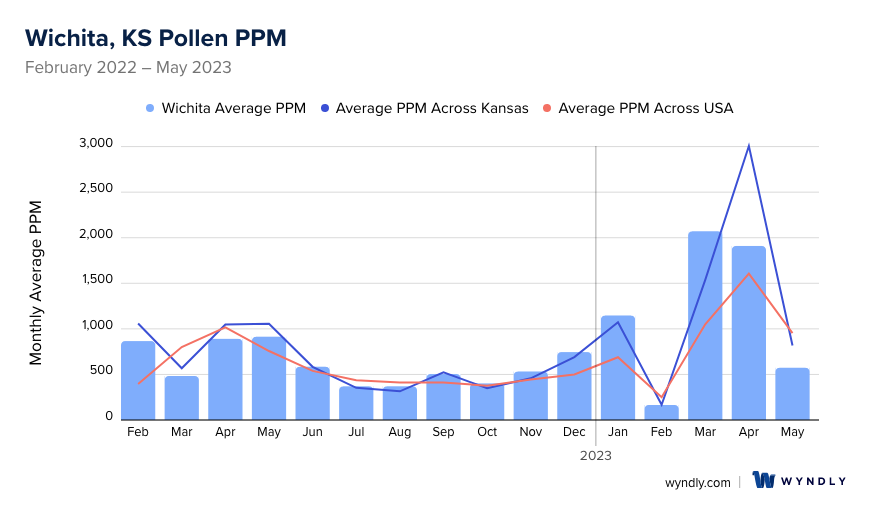
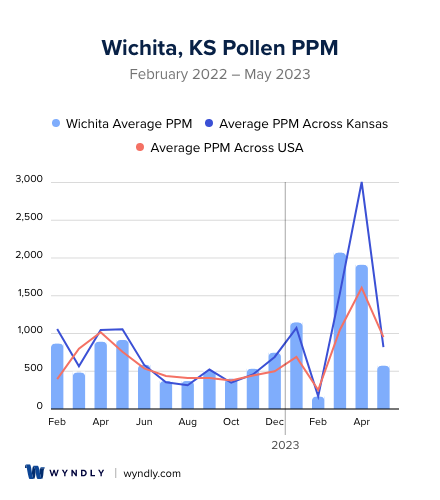
Wichita, KS Pollen and Allergy Breakdown by Month
Grass
When is grass pollen highest in Wichita, KS?
February has the highest grass pollen in Wichita, KS with an average PPM of
When is grass pollen lowest in Wichita, KS?
December has the lowest grass pollen in Wichita, KS with an average PPM of
Tree
When is tree pollen highest in Wichita, KS?
March has the highest tree pollen in Wichita, KS with an average PPM of
When is tree pollen lowest in Wichita, KS?
July has the lowest tree pollen in Wichita, KS with an average PPM of
Weed
When is weed pollen highest in Wichita, KS?
December has the highest weed pollen in Wichita, KS with an average PPM of
When is weed pollen lowest in Wichita, KS?
February has the lowest weed pollen in Wichita, KS with an average PPM of
Wichita, KS Pollen Monthly Breakdown by Pollen Type



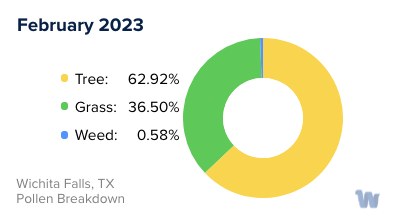
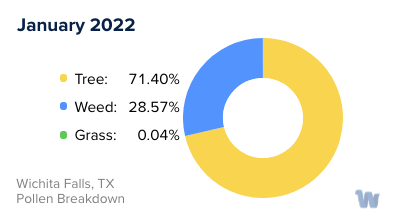
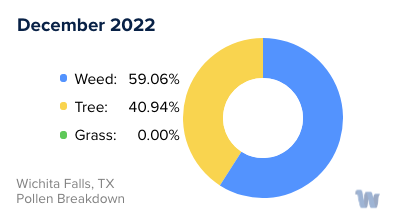

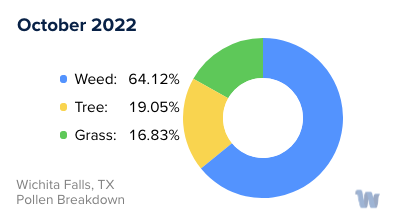

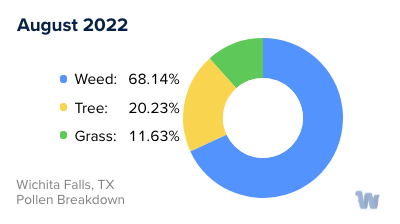

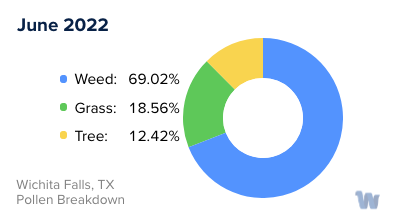
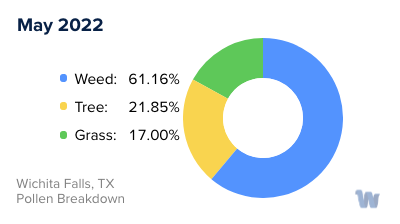
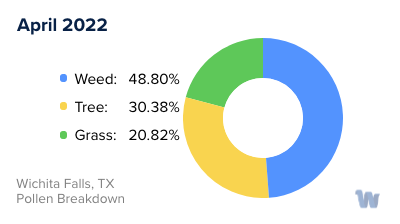
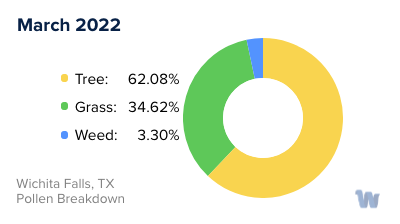

Pollen and Hay Fever in Wichita, KS
In the vibrant city of Wichita, Kansas, the changing seasons bring an array of colorful blooms and lush greenery. However, with the beauty of nature comes the less welcome arrival of pollen, which can cause allergies and hay fever for many residents.
Pollen allergies, commonly referred to as hay fever, occur when your immune system reacts to pollen as if it’s a harmful invader. The body’s response is to produce chemicals that lead to the well-known symptoms such as sneezing, runny nose, and itchy eyes.
In Wichita, various types of pollen can trigger allergies. One of the primary culprits is tree pollen, which is typically most prevalent in the spring. Wichita is home to several species of trees including oaks, maples, and pines, all of which release copious amounts of pollen into the air.
As spring transitions into summer, grass pollen takes center stage. Wichita's landscape is dotted with various grasses, such as Bermuda and Kentucky bluegrass. These grasses release their pollen from late spring to early summer, making this a challenging time for those sensitive to grass pollen.
Come fall, it's the weeds that become the main concern. Ragweed, in particular, is notorious for causing allergies and is abundant in Wichita. Other weeds like sagebrush and lamb’s quarters also contribute to the pollen count during this season.
Although winter sees a decrease in pollen levels, those with sensitivities should still be mindful as indoor allergens can become more prominent during this time.
In summary, residents of Wichita, Kansas, are exposed to different types of pollen throughout the year. Understanding the types of pollen and the seasons in which they are most prevalent can be beneficial for individuals looking to manage their symptoms and enjoy the beauty of Wichita's outdoors.

